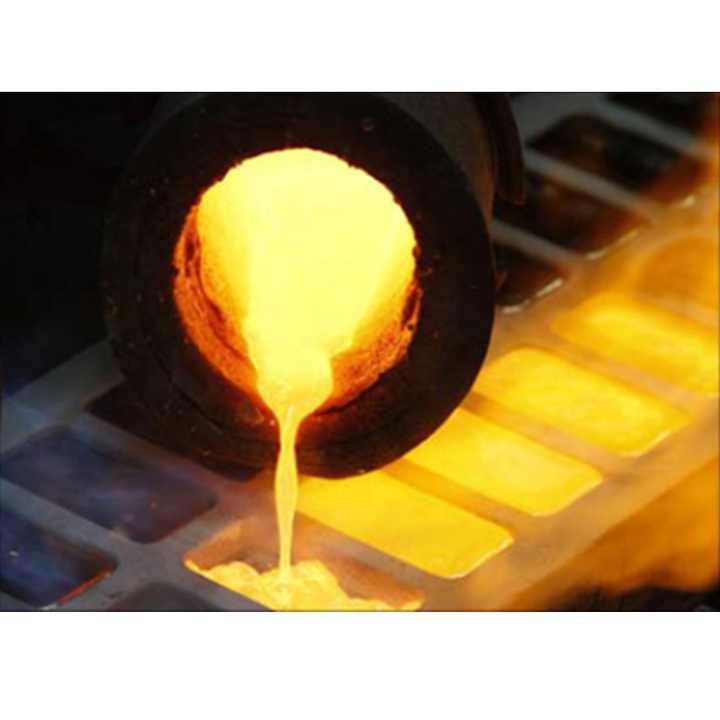The Process of Gold Refining and Purification

Gold refining and purification are critical processes in the gold industry. These processes are essential to ensure that gold is free from impurities and meets the required standards for various applications, from jewelry to electronics. This article delves into the methods and techniques used in gold refining and purification, providing a comprehensive overview of how raw gold is transformed into pure gold.
Understanding Gold Refining
Gold refining involves several steps to extract pure gold from its ores and other materials. The primary goal of gold refining is to achieve high purity levels, typically reaching 99.99% pure gold. The process of gold refining is complex and involves various techniques depending on the form of the gold and the level of purity required.
The Basics of Gold Refining
Gold refining begins with the initial processing of raw gold. This raw gold is often obtained from mining operations and contains various impurities and other metals. The first step in the refining process is to crush and grind the ore to release the gold particles. This is typically done using mechanical crushers and grinders.
Once the gold ore is ground into a fine powder, it undergoes a process known as gravity separation. In this stage, gold is separated from other materials based on its density. This is often achieved using sluice boxes or shaking tables.
Chemical Methods for Gold Purification
One of the most common methods for gold purification is through the use of chemical processes. These processes are designed to dissolve impurities and separate gold from other elements.
The Cyanidation Process
The cyanidation process is a widely used method for extracting gold from ore. In this process, the gold ore is mixed with a cyanide solution, which dissolves the gold. The resulting gold-cyanide solution is then processed to recover the gold. This method is effective for low-grade ores and is commonly used in the mining industry.
The Wohlwill Process
The Wohlwill process is another method used in gold refining. This electrolytic method involves dissolving gold in a chlorine-based solution and then electroplating it onto a cathode. The Wohlwill process is highly effective for producing high-purity gold and is often used for refining gold to a purity of 99.99%.
Physical Methods for Gold Refining
Physical methods are also used in gold refining to purify gold and remove impurities. These methods typically involve the use of physical properties such as density or magnetism.
The Miller Process
The Miller process is a physical method that uses chlorine gas to purify gold. In this process, the gold is melted and exposed to chlorine gas, which reacts with impurities to form chlorides. The impurities are then removed, leaving behind pure gold. The Miller process is effective for producing gold with a purity of around 99.5%.
The Cupellation Process
The cupellation process is another physical method used in gold refining. In this process, gold is heated in the presence of oxygen, which oxidizes impurities and forms a slag. The slag is then removed, leaving behind pure gold. This method is often used for refining gold from ores that contain lead or other base metals.
The Importance of Gold Purity
Gold purity is a crucial factor in determining the quality and value of gold. High-purity gold is essential for various applications, including jewelry making, electronics, and investment. The process of gold refining and purification ensures that gold meets the required standards and is free from impurities.
Applications of Pure Gold
Pure gold is used in a variety of applications due to its unique properties. In the jewelry industry, high-purity gold is used to create elegant and durable pieces. In electronics, pure gold is used for its excellent conductivity and resistance to corrosion. Additionally, investors often seek high-purity gold as a safe and reliable asset.
Conclusion
Gold refining and purification are essential processes in the gold industry, ensuring that gold is free from impurities and meets the required purity standards. Through various methods, including chemical and physical techniques, raw gold is transformed into pure gold suitable for a range of applications. Understanding these processes is crucial for appreciating the value and quality of gold, whether in jewelry, electronics, or investment.
In summary, the intricate processes involved in gold refining and purification highlight the importance of these techniques in achieving high-purity gold. Whether using chemical methods like cyanidation and Wohlwill or physical methods like Miller and cupellation, each technique plays a vital role in ensuring that gold meets the highest standards of purity.
